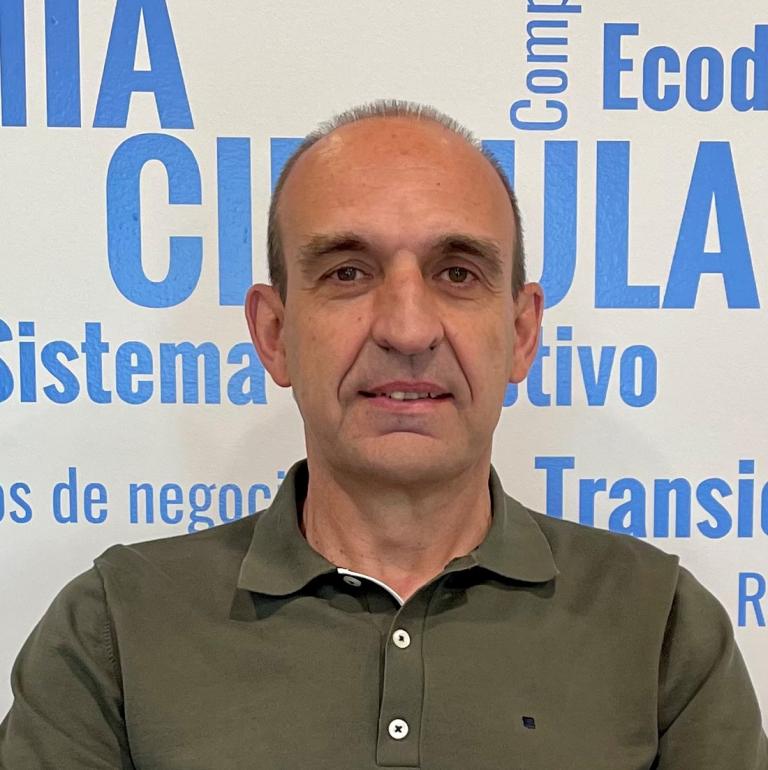Meet the CCRI stakeholders: Castilla y León (CCRI Pilot)
Published on 18.03.2025
In this month’s CCRI stakeholder interview, we speak to Jesús Ángel Díez Vázquez, Programme Director of the Natural Heritage Foundation for the Castilla y León region in Spain.
Jesús explains how CCRI Pilot Castilla y León is developing circular systemic solutions across the region’s entire food, water and nutrients value chain. In particular, the region is focusing on producing bio-fertilisers from recovered biowaste flows, including ash, digestate, food industry biowaste and forest management residues.
Jesús tells us about the support the region has received from Green Assist, complementing the assistance given in the framework of the CCRI, and shares some interesting lessons learned for other projects and regions.

How has the support provided by Green Assist contributed to the success of your Pilot's circular systemic solution(s) and complemented CCRI Office support?
The most important thing for us was to get additional, specific technical support to know how other countries are managing to mix waste flows to produce bio-fertilisers. Green Assist gave us expert support including a research perspective, enabling us to find the optimal combination of materials and to deal with legal and technical aspects.
We now have more concrete information about how to implement solutions in our region, having compared our soil standards to Northern European soil standards, where the soil has different chemical compositions to that in Spain and the Mediterranean. This means our fertiliser production costs will be lower than expected.
We are now using this information to draft our project and develop our circular solutions, following the CCRI Methodology. The CCRI also helps us monitor how well we are developing it with the self-assessment tool [which helps cities and regions to track local progress towards implementing goals], as we are implementing this circular approach for the entire food, water and nutrients value chain – not only for a single product or a specific part of the chain.
The CCRI also provides us with access to resources and to other projects with relevant experience, enabling us to exchange knowledge.
What are some lessons learned from this support that could benefit similar projects?
There must be complementarity between solutions. Producing one circular product may mean you cannot produce another: for example, if you produce biogas for fertilisers, you are unable to produce chemical products for fuel, as this is not possible after digestion. So, you need to choose your priorities.
In our case, our priority is to produce fertilisers, for which we have created links between raw materials along the value chain. Phosphorous is the critical material we need for production, so we have created a working group to find alternative sources of phosphorous from waste flows along our region’s value chain.
Bio-waste is produced at each part of the lifecycle of food, which we need to manage. But we have learned that the right waste management solution is different from different perspectives, for example in farming compared to agro-industry, and other projects, cities and regions may have different experiences. For this reason, the new CCRI Compass [which helps users find different CCRI support services] is a very interesting tool.
In a meeting with the OECD, a CCRI partner, we also discussed the [importance of the] self-assessment tool, as cities and regions in Spain struggle with data availability at the regional and local level, which we need to monitor implementation and results.
How does the project's business case support future scalability for other CCRI cities and regions in Spain and beyond?
The most complicated part of our business case is to transform the whole production model to involve the whole value chain. This is the most important thing to replicate in other cities and regions.
I have seen that many projects do not have this vision and proposals focus only on a single product when developing their circular solution, without looking at the global vision of the value chain with the materials they are using.
We need other projects and regions to replicate this comprehensive lifecycle value chain approach and to substitute critical raw materials, or else we will not achieve our targets to become circular by 2050.
Participating in the CCRI is an opportunity to share our idea for this. When I speak with stakeholders in my region and tell them that we are using the CCRI Methodology and being supported by the European Commission, it gives more credibility to this idea.

including bio-based economy
CEAP2 key product value chain
CEAP2 key product value chain
CEAP2 key product value chain
predominantly urban regions, intermediate and predominantly rural regions, refer to TERCET typology NUTS 3 region



